Pan Am Clipper... This is amazing - what a sorry ending though
Apr 10, 2018 23:11:01 #
Pan Am Clipper... This is amazing - what a sorry ending though
Traveling was a real pleasure if you could afford to pay the price.
Note the comment on last page regarding the Truk lagoon
FLYING THE ATLANTIC DURING THE LATE 1930's
Clipper passengers took their meals at real tables, not their seats.
For most travelers in the 21st century, flying is a dreary experience, full of inconvenience, indignity, and discomfort.
That wasn't the case in the late 1930s, when those with the money to afford trans-oceanic flight got to take the Boeing Model 314, better known as the Clipper.
Even Franklin Roosevelt used the plane, celebrating his 61st birthday on board.
Between 1938 and 1941, Boeing built 12 of the jumbo planes for Pan American World Airways.
The Clipper had a range of 3,500 miles — enough to cross either the Atlantic or Pacific, with room for 74 passengers on board. Of course, modern aviation offers an amazing first class experience (and it's a whole lot safer), but nothing in the air today matches the romanticism of crossing the oceans in the famed Clipper.
The nickname Clipper came from an especially fast type of sailing ship used in the 19th century.
The ship analogy was appropriate, as the Clipper landed on the water, not runways.
The Clipper made its maiden trans-Atlantic voyage on June 28, 1939.
But once the US entered World War II, the Clippers were pressed into service to transport materials and personnel.
POSTSCRIPT:
Prior to WWII, the Japanese Military became very interested in the new Pratt & Whitney radial engines that powered the PanAm Clipper.
On a flight from San Francisco to China, a Clipper landed on Truk Lagoon to be refueled by Japanese authorities.
Later, the Clipper was assumed lost over the Pacific. Years later, it was revealed that the crew and passengers were arrested and murdered by the Japanese.
The engines were retrieved and sent to Japan and the Clipper was sunk in deep water off Truk Lagoon.
Traveling was a real pleasure if you could afford to pay the price.
Note the comment on last page regarding the Truk lagoon
FLYING THE ATLANTIC DURING THE LATE 1930's
Clipper passengers took their meals at real tables, not their seats.
For most travelers in the 21st century, flying is a dreary experience, full of inconvenience, indignity, and discomfort.
That wasn't the case in the late 1930s, when those with the money to afford trans-oceanic flight got to take the Boeing Model 314, better known as the Clipper.
Even Franklin Roosevelt used the plane, celebrating his 61st birthday on board.
Between 1938 and 1941, Boeing built 12 of the jumbo planes for Pan American World Airways.
The Clipper had a range of 3,500 miles — enough to cross either the Atlantic or Pacific, with room for 74 passengers on board. Of course, modern aviation offers an amazing first class experience (and it's a whole lot safer), but nothing in the air today matches the romanticism of crossing the oceans in the famed Clipper.
The nickname Clipper came from an especially fast type of sailing ship used in the 19th century.
The ship analogy was appropriate, as the Clipper landed on the water, not runways.
The Clipper made its maiden trans-Atlantic voyage on June 28, 1939.
But once the US entered World War II, the Clippers were pressed into service to transport materials and personnel.
POSTSCRIPT:
Prior to WWII, the Japanese Military became very interested in the new Pratt & Whitney radial engines that powered the PanAm Clipper.
On a flight from San Francisco to China, a Clipper landed on Truk Lagoon to be refueled by Japanese authorities.
Later, the Clipper was assumed lost over the Pacific. Years later, it was revealed that the crew and passengers were arrested and murdered by the Japanese.
The engines were retrieved and sent to Japan and the Clipper was sunk in deep water off Truk Lagoon.
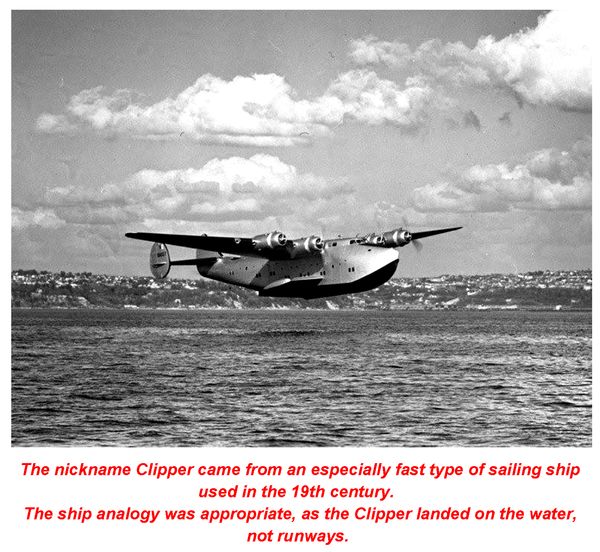
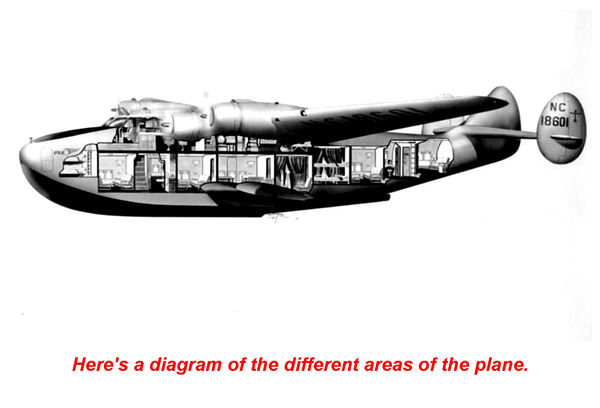
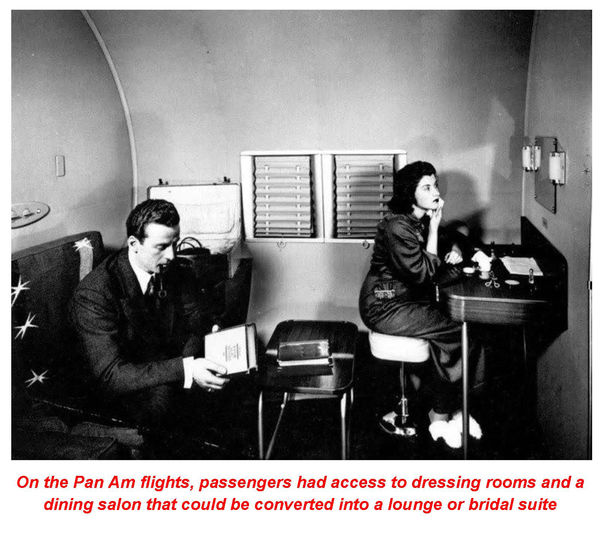
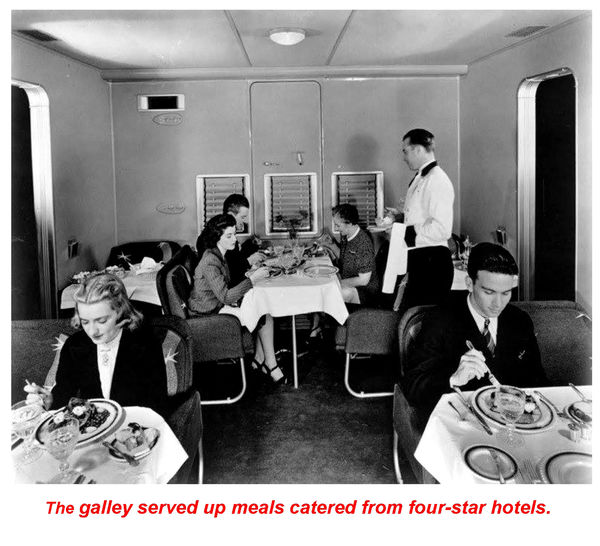
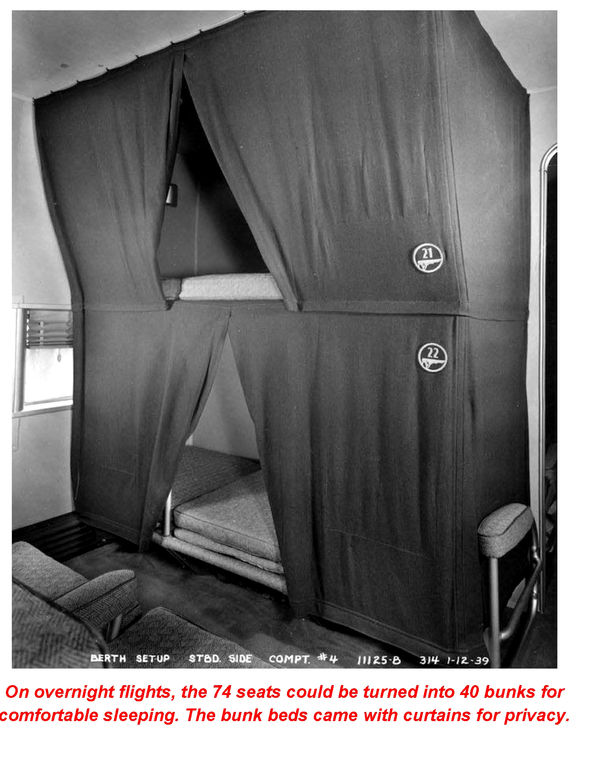
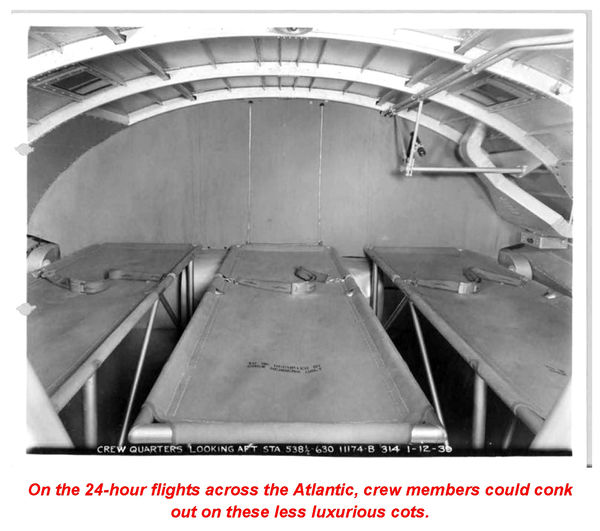
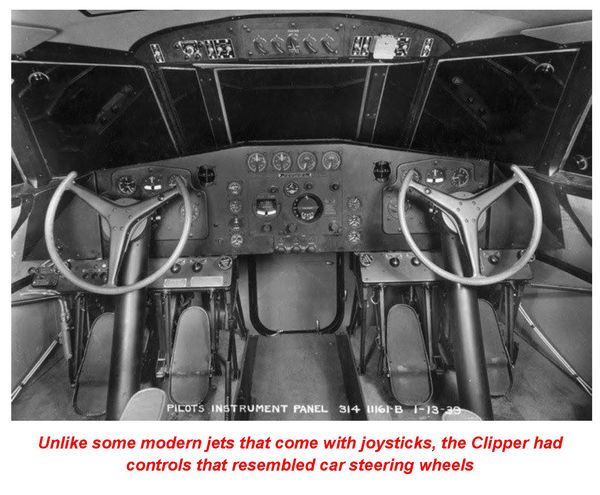
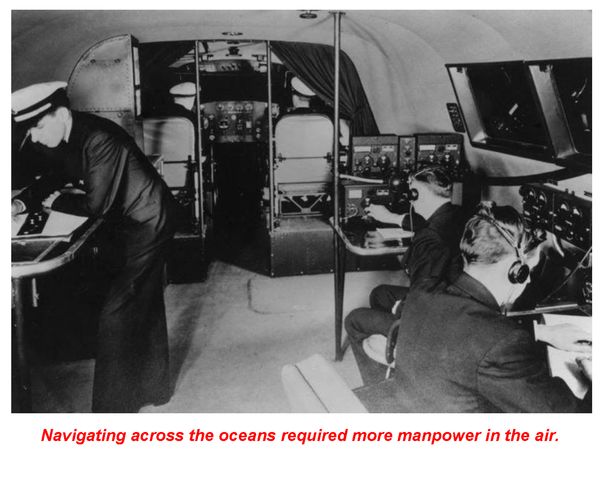

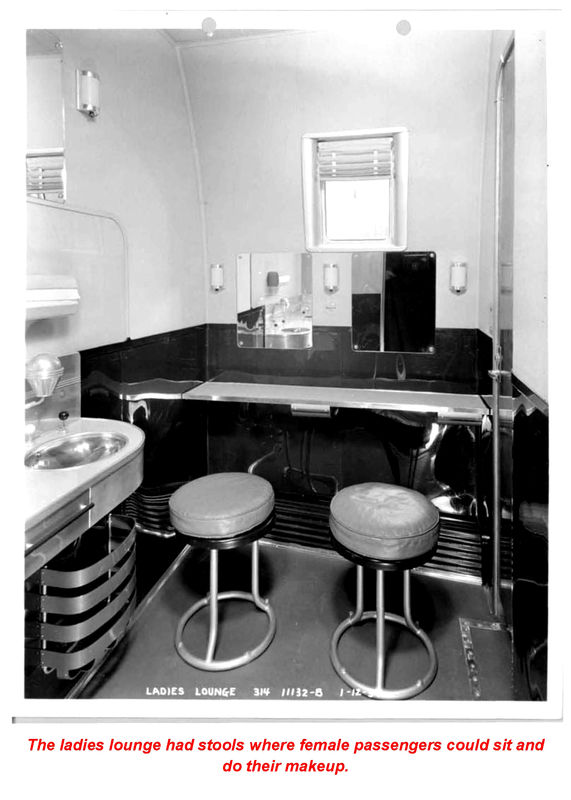
Apr 11, 2018 05:19:12 #
Oldsailor65 wrote:
I have often thought these would be great to fly up the pacific coast to Alaska. Low slow and landing in small towns and near glaciers. b color=red Pan Am Clipper... This is amazing - ... (show quote)
Apr 11, 2018 09:38:47 #
lpnmajor
Loc: Arkansas
Oldsailor65 wrote:
b color=red Pan Am Clipper... This is amazing - ... (show quote)
At least two of those old birds still fly, as fire fighters. I've seen videos of them skimming a lake scooping up large volumes of water to dump on forest fires. I don't know for sure that they're still in service.
Apr 11, 2018 11:21:20 #
Flying used to be an enjoyable experience. Now nothing more than a cattle round up . I used to even enjoy just sitting in an airport lounge . Even that draws somebody's suspicion.
If you want to reply, then register here. Registration is free and your account is created instantly, so you can post right away.

